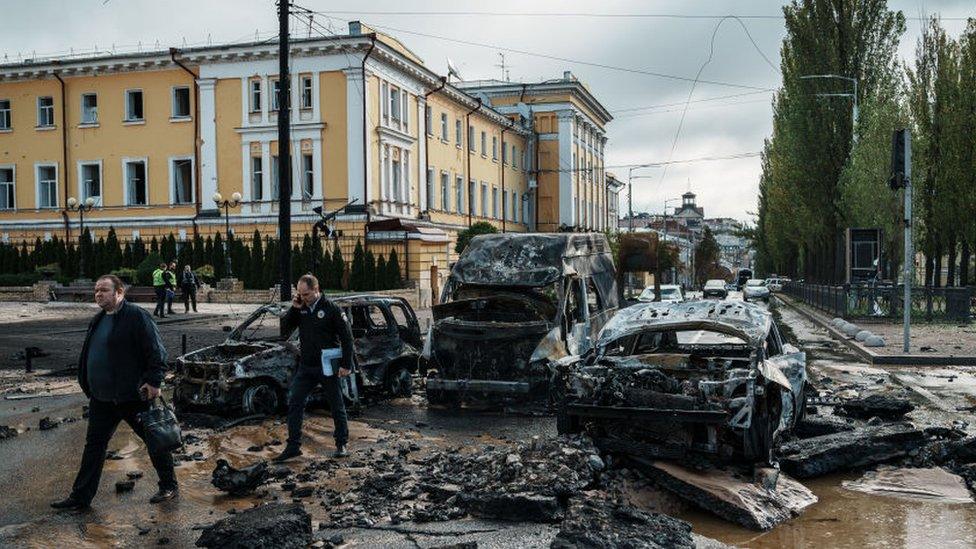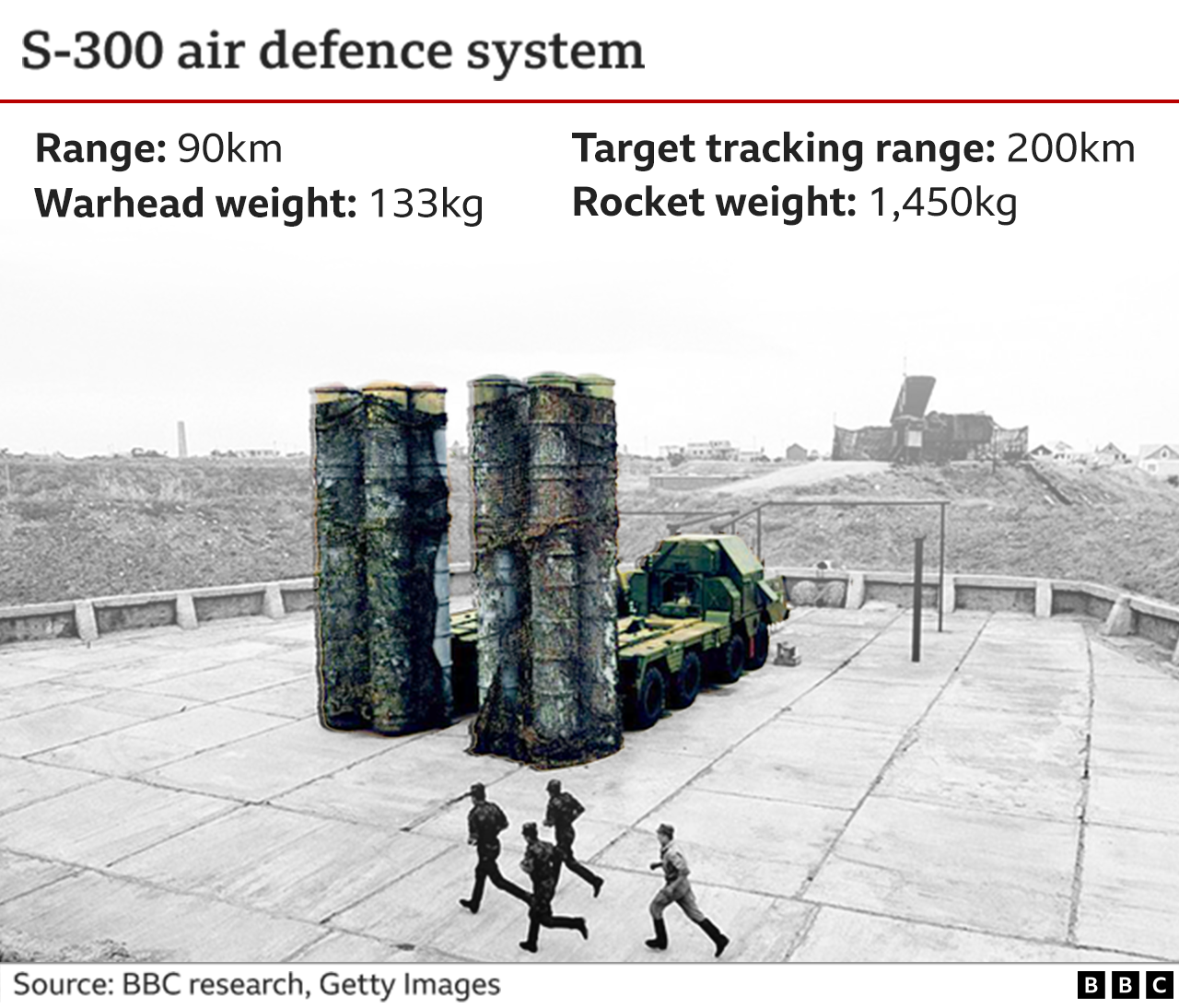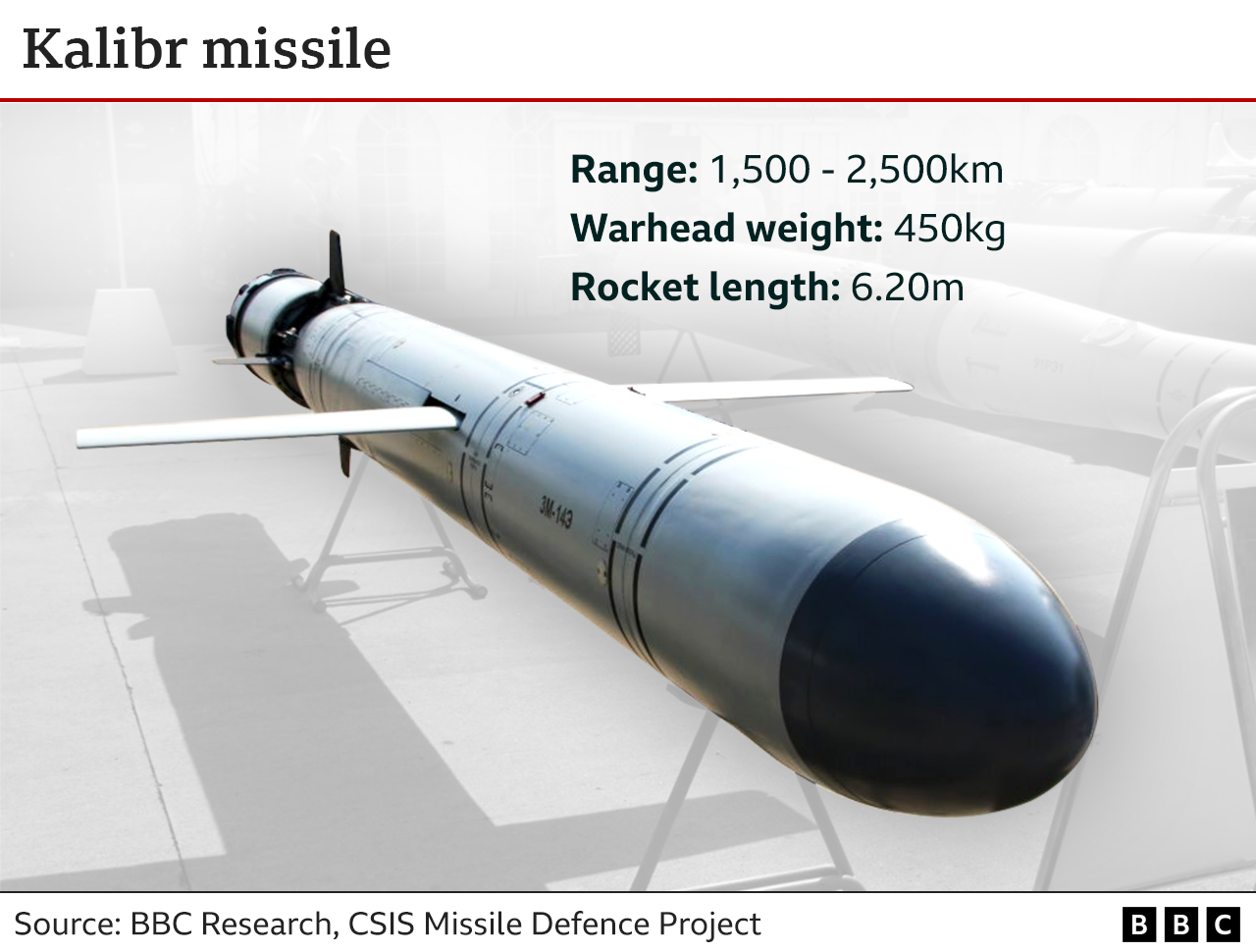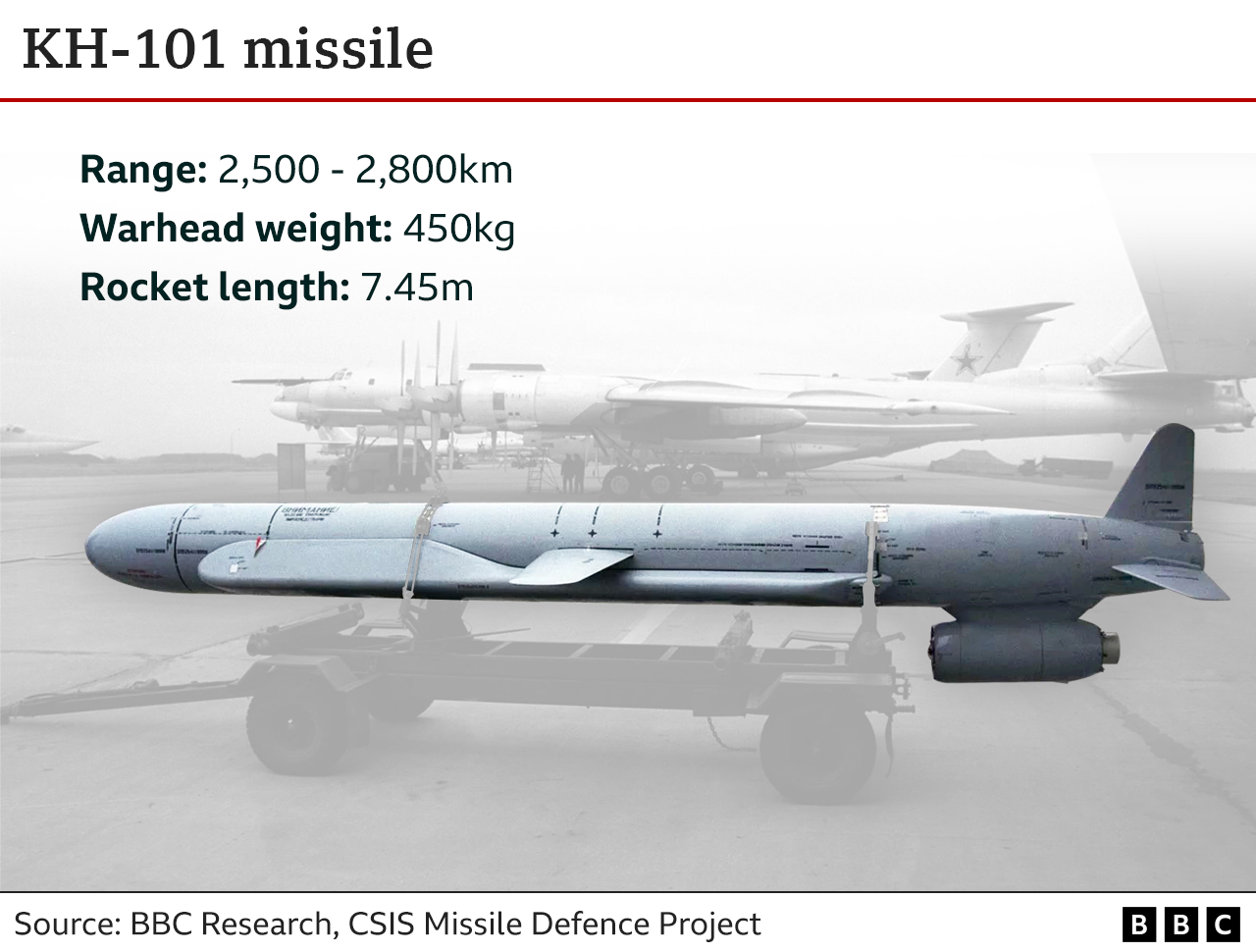War in Ukraine: Is Russia’s stock of weapons running low?
- Published

Cars and buildings were destroyed following missile strikes on Ukraine's capital Kyiv
Russia has launched a wave of strikes across Ukraine this week, but some security experts say its weapons supplies are running low, especially of up-to-date, precision missiles.
What weapons has Russia been using?
As Russia has stepped up its missile strikes in recent days, questions have been raised about the type of weapons deployed.
Defence experts have pointed to Russia's use of surface-to-air missiles to hit land targets as an indication of a shortage of more suitable munitions.
"The most notable thing in [recent attacks] is the increased use of a variety of missiles against land targets," says Douglas Barrie, a military expert at the International Institute for Strategic Studies.
"Land attack cruise missiles, that's where we think there may be some issues. At least in some areas, not running out, but possibly running low."
Russia used a lot of precision-guided missiles to hit land targets across Ukraine early in the war, but the strikes died down over the summer, with some Western defence officials saying their stocks were significantly depleted.
"We know - and Russian commanders on the ground know - that their supplies and munitions are running out," says Sir Jeremy Fleming, head of the British intelligence agency GCHQ.
What visual evidence is there?
Russia's missile stockpile is a closely guarded secret, and we don't know what material Western intelligence services are basing their assessments on, but there are some clues in images emerging from the most recent attacks.
Some of the pictures of wreckage posted online appear to show the debris of S-300 missiles on the ground in Ukraine.
Allow X content?
This article contains content provided by X. We ask for your permission before anything is loaded, as they may be using cookies and other technologies. You may want to read X’s cookie policy, external and privacy policy, external before accepting. To view this content choose ‘accept and continue’.
These are weapons originally designed to attack targets in the air, not on the ground.
Posts on social media have claimed these S-300 missiles have been repurposed by Russia to hit land targets.
We've taken a close look at a series of images circulating online, and have verified three pictures of debris on the ground in Ukraine which are consistent with S-300 surface-to-air missiles.

We've cross referenced the writing which appears on the side of the debris with images of S-300 missiles, and have found that the labelling is consistent.
The dimensions are also comparable.

Some experts say Russia is repurposing these munitions because they are running low on more precise missiles.
"I'm sure they've got through their stocks, looked at their ability to manufacture more… and realised the next best way to have that effect is to repurpose things like S-300 missiles," says Louise Jones at McKenzie Intelligence Services.
Russia using surface-to-air munitions to hit land targets may also be explained by operational limitations faced by its air force over Ukraine. Since the outset of its invasion Russia's air force failed to achieve air superiority over Ukraine, external.
Could these be Ukrainian missiles?
Both Russia and Ukraine possess these S-300 weapons and accuse each other for causing damage with them in recent attacks.
The Ukrainians use them to shoot down Russian missiles, and the Russians say these are falling to the ground and causing civilian casualties.

Evgeny Popov, an official in Russia's parliament, told the BBC that damage to civilian areas like children's playgrounds was "the work of [Ukrainian] anti-missile systems".
It's very difficult to tell the origin of a missile from its debris, say weapons experts.
"A blast fragmentation warhead like those on most S-300-compatible missile types would create similar debris either way… so I think the answer is pretty indeterminate there," says Sidharth Kaushal, a defence expert at the Royal United Services Institute.
Ian Williams, a fellow at the Center for Strategic and International Studies, says he hasn't seen any evidence of Ukrainian systems misfiring during the recent attacks.
Because there are so many variables to consider, he says, it is hard to say definitively from limited images of debris, but it's unlikely that Ukrainian air defences were stationed in city centres.
"Typically you put [them] on the outskirts of what you're defending... any [Ukrainian] interceptors that crash are unlikely to crash in an urban area."
What other weapons has Russia used?
Russia began the war with a barrage of missile strikes. The Pentagon estimated that the Russians had fired around 600 missiles in the first 11 days of the conflict which began in February.
Attacks continued from the ground, sea and air - with much of the latter from within the safety of Russian territory.

The type of Russian weapons fired includes ballistic and cruise missiles from Iskander launch platforms, and Kalibr cruise missiles from ships and submarines stationed in the Black Sea.
KH-101 and KH-555 air-launched cruise missiles have been deployed, as well as Tochka-U missiles, responsible for the deaths of more than 50 people at the Kramatorsk railway station in April.

BBC analysis of an attack on the Kremenchuk shopping centre in late June, which killed at least 20 people, determined that the missiles used were either KH-22s or a more modern variant, the KH-32.
These are older missiles originally designed to attack ships, rather than land targets, which has further fuelled the view that Russian stocks of modern weapons may be running low.
Reporting by Josh Cheetham, Chris Partridge, Thomas Spencer, Jake Horton and Daniele Palumbo.
